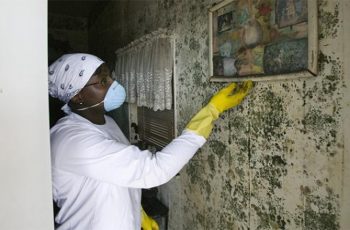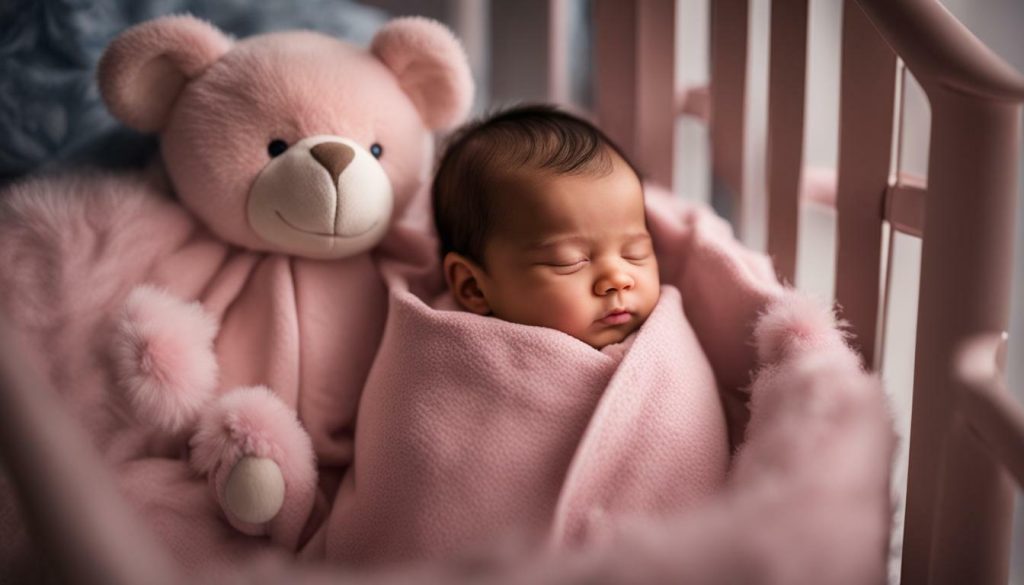
Keeping your baby warm at night is crucial for their comfort and safety. By following these tips, you can ensure a cozy sleep environment for your little one.
- Follow safe sleep guidelines recommended by the Academy of American Pediatrics.
- Dress your baby in layers to provide warmth without overheating.
- Consider using sleep sacks or wearable blankets for added comfort and security.
- Adjust the room temperature to create an optimal sleep environment for your baby.
- Gradually introduce blankets and pillows as your baby grows older, under the guidance of a pediatrician.
Safe Sleep Guidelines for Keeping Baby Warm
Before we dive into the tips, it’s essential to familiarize yourself with the safe sleep guidelines recommended by experts. To keep your baby warm at night safely, it’s important to follow these guidelines to reduce the risk of Sudden Infant Death Syndrome (SIDS) and other sleep-related accidents.
- Place the baby on their back to sleep: This position is recommended as it reduces the risk of SIDS. Avoid placing the baby on their side or stomach.
- Use a firm sleep surface: Ensure that the crib mattress is firm and fits the crib snugly. Avoid using soft surfaces, such as adult mattresses or cushions.
- Avoid loose bedding and pillows: Soft bedding, including blankets, pillows, and stuffed animals, can increase the risk of suffocation or overheating. Instead, dress your baby in layers to keep them warm without the need for additional blankets.
- Keep the sleep environment hazard-free: Remove any toys, crib bumpers, or other objects that may pose a suffocation or choking hazard.
To keep your baby warm without blankets, you can dress them in layers. Start with a onesie or a comfortable sleep suit as the base layer, then add a sleeper or a sleep sack for added warmth. Make sure the clothing is appropriate for the room temperature to prevent overheating. It’s also important to maintain a comfortable room temperature, between 68-72°F (20-22°C), to create an optimal sleep environment for your baby. Use a room thermometer to monitor the temperature and adjust as needed.
Table: Recommended Room Temperatures for Baby’s Sleep
| Temperature | Recommended Clothing |
|---|---|
| 68-72°F (20-22°C) | Lightweight sleep clothing or a onesie |
| 64-68°F (18-20°C) | Lightweight sleep clothing and a lightweight sleep sack or swaddle |
| Below 64°F (18°C) | Lightweight sleep clothing, a sleep sack or wearable blanket, and a cap |
As your baby grows older, you can gradually introduce blankets and pillows under the guidance of a pediatrician. It’s important to note that young infants should not sleep with loose blankets or pillows, as they can pose a suffocation risk. Always prioritize your baby’s safety when making choices regarding their sleep environment and consult with a healthcare professional if you have any concerns.
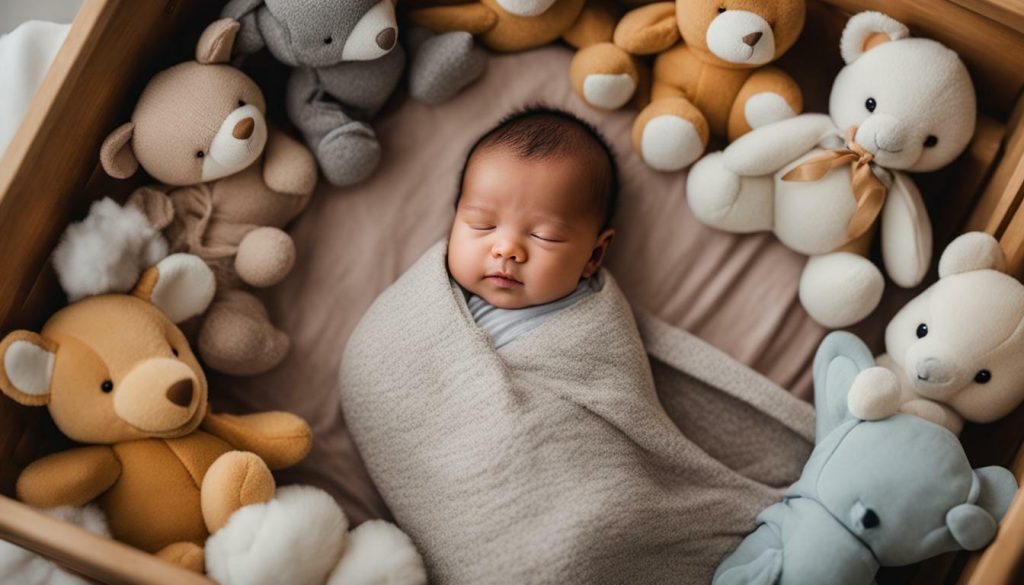
Remember, keeping your baby warm at night doesn’t have to compromise their safety. By following the safe sleep guidelines and implementing the tips mentioned in this section, you can ensure that your baby stays cozy and secure while they sleep.
Dressing Your Baby in Layers for Added Warmth
One effective way to keep your baby warm at night is by dressing them in layers. This allows you to easily adjust their clothing to maintain a comfortable temperature without the need for blankets, which can pose a suffocation hazard. When dressing your baby in layers, it’s important to choose fabrics that are breathable and soft against their delicate skin.
Start with a comfortable onesie or bodysuit as the base layer. This will help regulate your baby’s body temperature and keep them cozy. For added warmth, you can then layer on a long-sleeved shirt or sweater. Remember to avoid overdressing your baby and be mindful of the room temperature, as overheating can increase the risk of SIDS.
To complete the layered look, you can add leggings, pants, or footed pajamas. Opt for materials such as cotton or fleece, which provide warmth without causing your baby to overheat. It’s also a good idea to keep a hat and socks handy to keep their extremities warm. Remember, babies lose heat through their heads, so a soft, breathable hat can help retain their body heat.
Layered Clothing Tips:
- Choose breathable fabrics like cotton or fleece.
- Avoid overdressing your baby to prevent overheating.
- Keep a hat and socks on hand to keep their extremities warm.
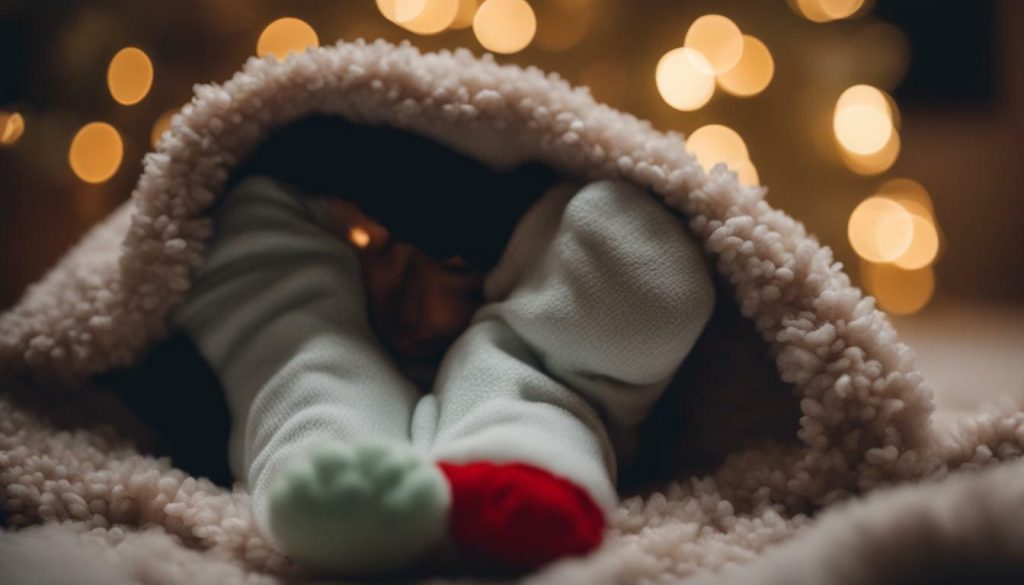
| Base Layer | Mid Layer | Outer Layer |
|---|---|---|
| Comfortable onesie or bodysuit | Long-sleeved shirt or sweater | Leggings, pants, or footed pajamas |
“Dressing your baby in layers is a safe and practical way to keep them warm at night. It allows you to adjust their clothing according to the room temperature and your baby’s comfort level. Remember to always prioritize their safety by avoiding loose blankets or overheating.”
Utilizing Sleep Sacks or Wearable Blankets
Sleep sacks or wearable blankets can be a great alternative to traditional blankets, keeping your baby snug and safe throughout the night. These specially designed garments provide warmth without the risk of covering your baby’s face, reducing the chances of suffocation or overheating. They come in various sizes and designs, ensuring a comfortable fit for your little one.
One of the advantages of using sleep sacks or wearable blankets is that they eliminate the need for loose bedding in the crib, reducing the risk of entanglement or suffocation. With no loose blankets to worry about, you can have peace of mind knowing that your baby is safe and warm during sleep.
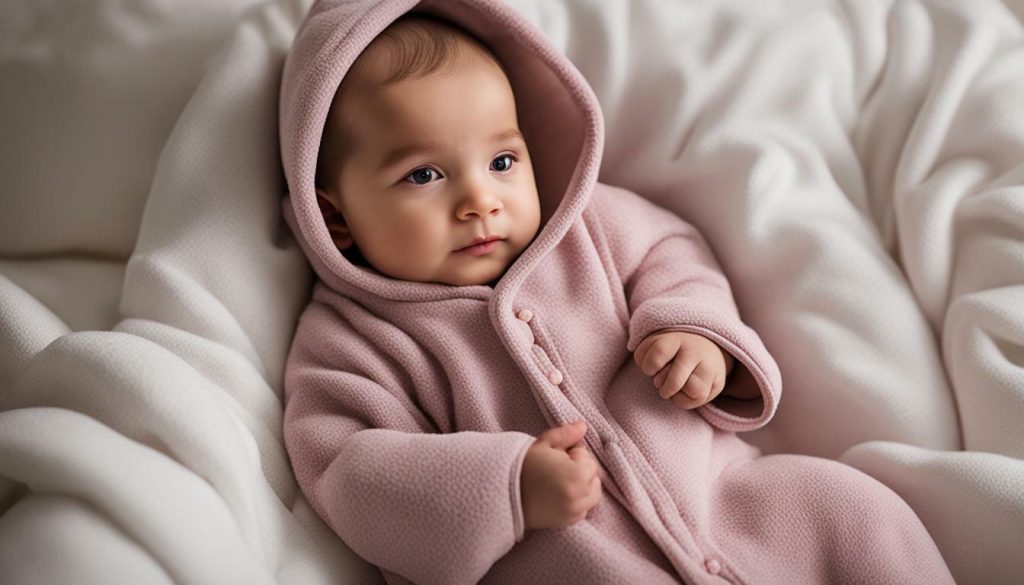
These sleep sacks or wearable blankets are typically made from breathable materials that help regulate your baby’s body temperature. They provide just the right amount of insulation to keep your baby warm without causing them to overheat. Remember to choose sleep sacks or wearable blankets appropriate for the season and the room temperature, ensuring optimal comfort for your little one.
| Benefits of Sleep Sacks or Wearable Blankets |
|---|
| Reduced risk of suffocation and overheating |
| Elimination of loose bedding in the crib |
| Comfortable and secure fit |
| Breathable materials for temperature regulation |
By following the safe sleep guidelines and using sleep sacks or wearable blankets, you can provide your baby with a warm and secure sleep environment. Remember to choose the appropriate sleepwear for the temperature, and always monitor your baby’s comfort and safety throughout the night.
Adjusting Room Temperature for Optimal Comfort
The temperature of your baby’s room plays a crucial role in ensuring a cozy night’s sleep. It’s important to maintain a comfortable and consistent temperature to keep your little one warm and comfortable throughout the night. According to the American Academy of Pediatrics, the ideal room temperature for a baby’s sleep environment should be between 68 and 72 degrees Fahrenheit (20-22 degrees Celsius).
To achieve and maintain this temperature, you can use a room thermometer to monitor the room’s temperature. Additionally, you can adjust the thermostat or use a space heater or fan to regulate the temperature as needed. It’s important to ensure that the room is not too hot or too cold, as extreme temperatures can make it difficult for your baby to sleep soundly.
During colder months, you can use a sleep sack or wearable blanket to provide an extra layer of warmth for your baby. These safe alternatives to loose blankets help regulate their body temperature without the risk of suffocation. As your baby grows older, you can consult with your pediatrician about gradually introducing blankets and pillows into their sleep routine.
Creating a cozy sleep environment for your baby involves paying attention to the room temperature, using appropriate sleepwear, and ensuring a safe sleep surface. By following these guidelines, you can keep your baby warm at night while prioritizing their safety and comfort.
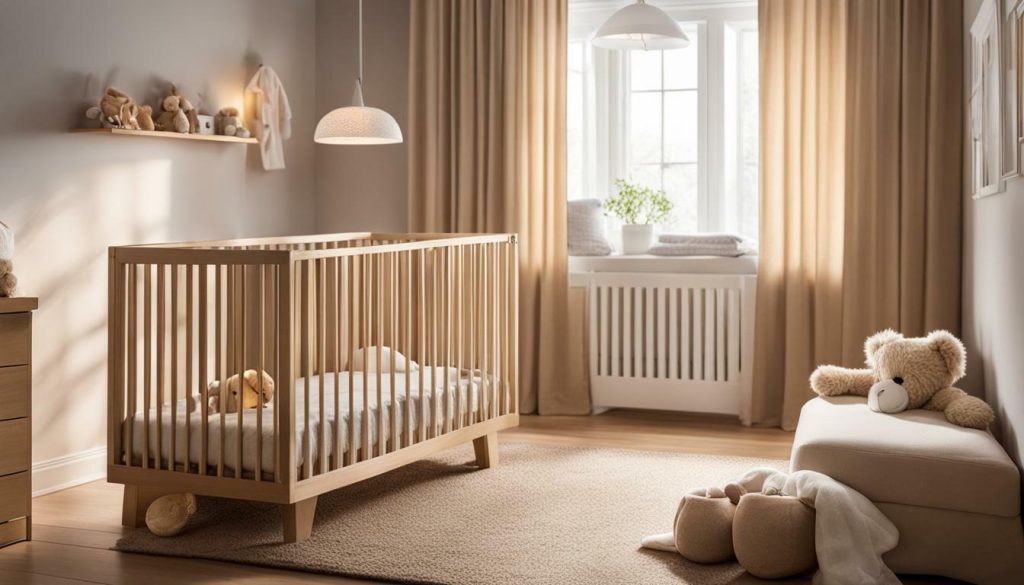
| Age | Recommended Room Temperature (Fahrenheit) |
|---|---|
| Newborn to 3 months | 68-72 |
| 3 to 6 months | 68-72 |
| 6 to 12 months | 68-72 |
| 1 year and older | 68-72 |
“Maintaining a comfortable room temperature is essential for your baby’s sleep. By following the recommended guidelines and using safe sleep practices, you can keep your little one warm and cozy throughout the night.”
Gradually Introducing Blankets and Pillows
As your baby grows older and becomes more mobile, you can gradually introduce blankets and pillows under the guidance of your pediatrician. It is important to wait until your baby is developmentally ready and able to move away from or reposition themselves if needed. This usually occurs around the age of one year.
When introducing blankets, choose ones that are lightweight and breathable to prevent overheating. Avoid using heavy or bulky blankets that can pose a suffocation risk. It is recommended to keep blankets away from the baby’s face while they sleep to reduce the risk of suffocation and SIDS.
Pillows should also be introduced gradually and with caution. It is generally recommended to wait until the age of two or older before introducing a pillow. When selecting a pillow, choose one that is firm and flat to provide support without posing a suffocation hazard. Remember to keep the pillow away from the baby’s face while they sleep.
Always consult with your pediatrician before introducing blankets and pillows to ensure they are developmentally appropriate for your baby. Your pediatrician can provide guidance on the best timing and type of bedding to use based on your baby’s individual needs and developmental milestones.
| Gradually Introducing Blankets and Pillows: | |
|---|---|
| Wait until your baby is developmentally ready and able to move away from or reposition themselves if needed. | ✔️ |
| Choose lightweight and breathable blankets to prevent overheating. | ✔️ |
| Avoid using heavy or bulky blankets that can pose a suffocation risk. | ✔️ |
| Keep blankets away from the baby’s face while they sleep. | ✔️ |
| Wait until the age of two or older before introducing a pillow. | ✔️ |
| Choose a pillow that is firm and flat to provide support without suffocation hazard. | ✔️ |
| Keep the pillow away from the baby’s face while they sleep. | ✔️ |
| Consult with your pediatrician for guidance specific to your baby’s needs. | ✔️ |
Remember: Every baby is different, and it’s important to follow the guidance of your pediatrician regarding the introduction of blankets and pillows. By gradually introducing these bedding items and ensuring they are appropriate for your baby’s age and stage of development, you can provide them with added comfort and warmth while promoting safe sleep practices.
“Introducing blankets and pillows to your baby’s sleep environment should be done gradually and in accordance with the recommendations of your pediatrician to ensure safety and minimize the risk of suffocation.” – Dr. Emily Thompson, Pediatrician
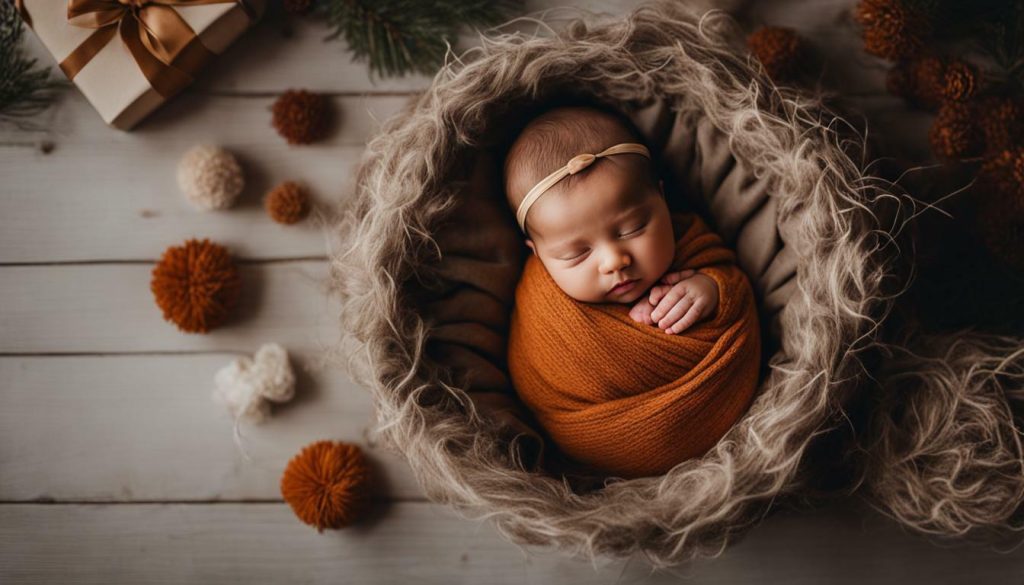
Understanding and Preventing Overheating Risks
While it’s important to keep your baby warm at night, it’s equally crucial to prevent overheating, as it can increase the risk of SIDS. To ensure your baby stays cozy without getting too hot, there are a few key precautions you can take:
- Dress your baby in lightweight, breathable clothing made from natural materials like cotton. Avoid overdressing them or using heavy blankets, as this can lead to excessive heat retention.
- Keep an eye on the room temperature and aim for a comfortable range between 68-72°F (20-22°C). Using a room thermometer can help you monitor and maintain an optimal sleep environment.
- Choose sleepwear specifically designed for warmth without the risk of overheating, such as sleep sacks or wearable blankets. These provide insulation without the need for loose blankets in the crib.
Remember, it’s important to avoid covering your baby’s head while they sleep, as this can contribute to overheating. Instead, use a lightweight hat or cap for added warmth if necessary. Regularly check your baby’s skin temperature to ensure they’re not becoming too hot or sweaty.
Expert Quote:
“Babies have immature temperature regulation systems, making them more susceptible to overheating. It’s important to strike a balance between keeping them warm and preventing excessive heat buildup to minimize the risk of SIDS.” – Dr. Jane Williams, Pediatrician
Table: Safe Sleep Guidelines
| Guidelines | Explanation |
|---|---|
| Place baby on their back to sleep | This reduces the risk of SIDS and allows the baby to regulate their body temperature more effectively. |
| Use a firm sleep surface | Avoid soft bedding, such as pillows and mattress toppers, which can pose suffocation hazards and increase the risk of overheating. |
| Avoid loose bedding and pillows | These can increase the risk of suffocation and overheating. Use sleepwear and wearable blankets instead. |
| Keep the sleep environment free from hazards | Remove toys, crib bumpers, and other potential choking or entanglement hazards from the crib to provide a safe sleep environment. |
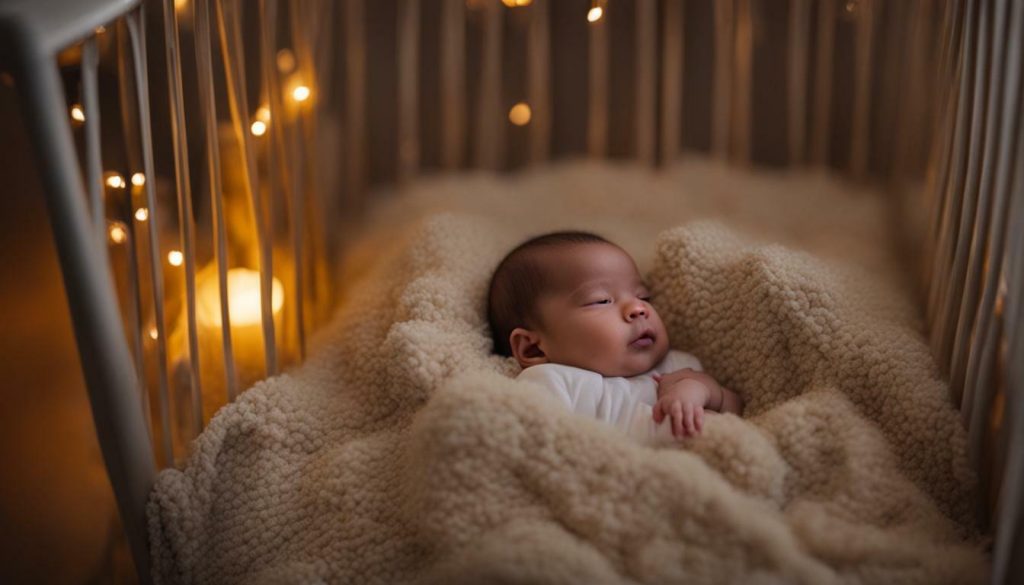
Beyond temperature and sleepwear, there are other ways to create a cozy sleep environment for your baby. By paying attention to small details, you can help ensure that your little one feels safe, relaxed, and ready for a restful night’s sleep.
- Soft bedding: Choose bedding made from gentle, breathable materials like cotton to enhance your baby’s comfort. Opt for a fitted sheet that securely covers the mattress, avoiding any excess fabric that could pose a suffocation risk.
- Soothing sounds: Incorporating calming sounds into your baby’s sleep routine can help create a peaceful atmosphere. Consider using a white noise machine or playing soft lullabies to help lull your little one into a deep slumber.
- Low light: A dark, quiet room can promote better sleep for your baby. Consider using blackout curtains or shades to block out excess light and create a serene environment that signals it’s time to sleep.
- Gentle aromas: Certain scents, such as lavender, have been known to promote relaxation and sleep. However, it’s important to use caution when introducing aromas to your baby’s sleep space. Consult with a pediatrician to ensure the chosen fragrance is safe and appropriate for your little one.
Remember, every baby is unique, so it may take some trial and error to find what works best for your little one. Pay attention to their cues and adjust the sleep environment as needed. With a cozy and soothing sleep space, your baby will be one step closer to a peaceful night’s sleep.
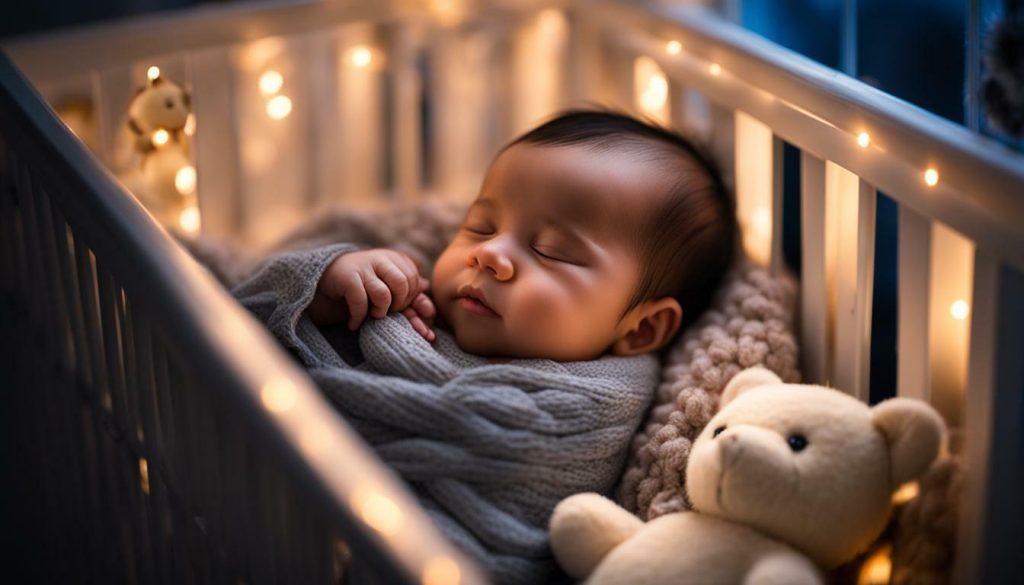
| Creating a Cozy Sleep Environment: | Benefits: |
|---|---|
| Soft bedding | Enhances comfort |
| Soothing sounds | Promotes relaxation |
| Low light | Creates a peaceful atmosphere |
| Gentle aromas | Can aid in sleep |
Conclusion
By following these tips and guidelines, you can ensure your baby stays warm and comfortable throughout the night, promoting a restful sleep. To keep your baby warm at night safely, it’s important to adhere to the safe sleep guidelines recommended by the Academy of American Pediatrics. These guidelines prioritize placing the baby on their back to sleep, using a firm sleep surface, and avoiding loose bedding and pillows in their sleep environment.
To provide warmth without the use of blankets, dressing your baby in layers is a great option. This allows you to easily adjust their clothing as needed to keep them cozy without the risk of overheating. Sleep sacks or wearable blankets can also be used to provide additional warmth and security, ensuring your baby is protected throughout the night.
It’s crucial to maintain a comfortable room temperature for your baby’s sleep. Keeping the room between 68-72 degrees Fahrenheit (20-22 degrees Celsius) can help create an optimal sleep environment. As your baby grows older, you can gradually introduce blankets and pillows under the guidance of a pediatrician, ensuring they are ready for these additions and reducing the risk of suffocation.
Remember to watch out for signs of overheating, such as sweating or feeling hot to the touch. Overheating can increase the risk of Sudden Infant Death Syndrome (SIDS), so it’s important to strike a balance between warmth and safety. Finally, creating a cozy sleep environment with soft bedding and soothing sounds can contribute to your baby’s comfort and help them settle into a peaceful night’s sleep.
FAQ
How can I keep my baby warm at night while following safe sleep guidelines?
To keep your baby warm at night safely, you can dress them in layers, use sleep sacks or wearable blankets, and adjust the room temperature to a comfortable level. It’s important to avoid loose bedding and pillows, and ensure the sleep environment is free from hazards.
When can I introduce blankets and pillows for my baby?
It is recommended to gradually introduce blankets and pillows as your baby grows older, under the guidance of a pediatrician. This helps to reduce the risk of suffocation and ensures your baby’s safety during sleep.
How can dressing my baby in layers help keep them warm?
Dressing your baby in layers allows for easy adjustment to their comfort level. You can add or remove layers as needed to keep them warm without overheating. Opt for breathable fabrics and avoid overdressing.
Are sleep sacks or wearable blankets safe for my baby?
Yes, sleep sacks or wearable blankets provide a safe alternative to traditional blankets. They keep your baby warm while allowing freedom of movement and reducing the risk of suffocation. Choose sleep sacks that fit properly and follow the manufacturer’s guidelines.
How should I adjust the room temperature for my baby’s sleep?
It is recommended to maintain a comfortable room temperature of around 68-72 degrees Fahrenheit (20-22 degrees Celsius) for your baby’s sleep. Use a reliable thermometer to monitor the temperature and make adjustments as needed to ensure your baby stays warm but not overheated.
What are the risks of overheating for my baby?
Overheating can increase the risk of Sudden Infant Death Syndrome (SIDS). It is important to prevent overheating by avoiding too many layers, keeping the room temperature at a comfortable level, and regularly checking your baby for signs of sweating or overheating.
How can I create a cozy sleep environment for my baby?
You can create a cozy sleep environment for your baby by using soft bedding and soothing sounds. Choose a firm sleep surface, remove any hazards such as toys or crib bumpers, and ensure the room is dark and quiet. Follow safe sleep guidelines and make your baby’s sleep space comfortable and inviting.

